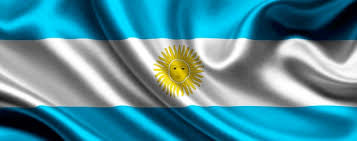Ban lifted on India: Can Argentina's pharma market outshine its rivals?
November 04, 2014 | Tuesday | Features | By BioSpectrum Bureau
Ban lifted on India: Can Argentina's pharma market outshine its rivals?
(Photo Courtesy: www.diariodoturismo.com.br)
By 2020, its pharma market is expected to double-up touching $15 billion.
Due to Argentina's local domestic policies, previously, only APIs were allowed to be imported into Argentina from India.
According to a senior official who requested anonymity, for years, Argentina's pharmaceutical associations and local groups had local manufacturing interest. They lobbied many years together to maintain the competitiveness of Argentina's pharma companies and averted facing fierce competition from global pharmaceutical giants.
Speaking exclusively to BioSpectrum, Mr Amarendra Khatua, Ambassador, Embassy of India in Argentina said, "Indian pharma companies have to prepare a country specific market penetration action plan to develop distribution network, identify joint manufacturing areas, specialties and facilities and setting up production bases in Argentina. Multinational firms, Argentine laboratories and established distributors are strong here. Now that India has been provided the opportunity, they have to use the existing strength of these institutions to create openings for them. Immediate exports of generic drugs will increase and this will increase interest in the market."
Now along with India, other countries that are already exporting medicines into Argentina include Australia, Mexico, Brazil, Cuba, China, Chile, Finland, Hungary, Ireland, Luxemburg, Norway, and New Zealand.
"This incredible policy change by Argentina, including India in the list of countries allowed to import pharmaceuticals, has become possible only due to constant persuasion by H E Ambassador of Indian Embassy in Argentina and senior officials of department of commerce, and government of India, at various levels," said Pharmaceuticals Export Promotion Council of India (Pharmexil) in a circular on its website.
In 2001, Argentina faced massive financial crisis comprising of a $90 billion debt. The government later realized that the situation is not good for its manufacturing sector by keeping foreign companies at bay.
The low growth of Latin American countries in 2014 was attributed to the decrease in domestic demand, and lowering external demand for commodities from China, and inadequate investments.
India and Argentina are the largest importer and exporter of Argentine soy oil in the world. According to the Economic Survey issued by the UN Economic Commission for Latin America and Caribbean (ECLAC) on 4 August, 2014, the GDP growth of Latin America is likely to be 2.2 per cent declining from 2.6 per cent in 2013, 3 per cent in 2012, 4.4 per cent in 2011 and 4.7 per cent in 2010.
Brazil, the largest economy in the region is likely to grow by 1.4 per cent in 2014 as against 2.5 per cent in 2013. Mexico, the second largest, is expected to grow by 2.5 per cent increasing from 1.1 per cent in 2013.
Argentina, the third largest, is expected to show negative growth post technical debt default caused on July 31, 2014, as a result of failure of talks between the Argentine government and the holdout funds.
Talking about the trends that may evolve as a result of this landmark decision of importing from India, Mr Khatua predicts that first there will be an increase in the interest of distributors in Indian generic drugs in Argentina.
"Secondly, state controlled laboratories will express interest to get Indian partners to produce for supply and distribution in the national programmes provincial health schemes. Thirdly, there will be an interest in knowing how the existing distributors and importers could raise their profit margin by replacing imports from western markets. Already couple of Argentine Provinces have started to talk on setting up their own laboratories with Indian partners," he revealed.
In Latin America, Venezuela continues to have the highest inflation at 60.9 per cent, followed by Argentina with 21.3 per cent in May 2014.
According to an estimate, foreign exchange reserves are at higher levels in most Latin American countries except for Argentina and Venezuela. Brazil's reserves were $369 billion and Mexico's $191 billion in May 2014. However, Argentina's reserves worth $28 billion and Venezuela's $22 billion were much lower than the reserves of its neighbors like Peru, Colombia and Chile.
According to Mr Khatua, large number of specialized Indian life sciences companies with well-developed products, and products that match the quality with lower prices are likely to gain a grip in the Argentine market.
"But plenty of market development and penetration work has to be done," he expresses. "Western firms, well established distributors, defined networks and lobbies and entrenched market-related practices need to be challenged. But it will not be difficult though preparatory time is necessary."
As a final piece of advice, Mr Khatua said, "Prepare to visit and know the market. Identify the niche areas. Locate suitable distributors and partners. That will help in increasing export share and future presence in the market in a bigger scale. Our help is always there."
Glenmark, Cadila, and Torrent Pharma have already set up their bases in Brazil. Product registrations and approvals consume a whopping 4-7 years in Brazil and more than 2 years in Mexico. As for Argentina, it maybe too early to make any conclusions now.










